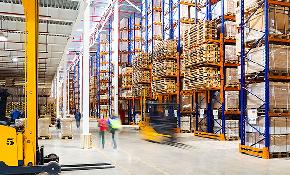 Del Markward, SIOR, president of Markward Group, Allentown, PA
Del Markward, SIOR, president of Markward Group, Allentown, PA
ALLENTOWN, PA—The Lehigh Valley market wasn’t always a big focus for industrial developers. In the 1970s and 1980s, when target sizes of warehouse projects were 100-200,000 square-foot properties, developers and logistics companies focused mainly on northern and central New Jersey, says Del Markward, SIOR, president and CEO of the Markward Group in Allentown, PA.
“The metrics have changed with e-commerce,” Markward tells GlobeSt.com. “It really is about the eight hour drive time, getting to Boston, getting down to Richmond. When you draw the big circle with the current freight driver rules, the big circle gets you to roughly one third of the US population in a one-day drive. Now logistics companies are really putting circles on the map as to where they can hit the population within that drive time.”
Listen to our interview with Markward in this audio player.
Markward has owned and operated his real estate consulting, advisory, and brokerage firm since 1995. He previously worked for some of the largest companies in the world, including IBM, CIGNA, Coca-Cola, Pepsi, Microsoft, GE, GM, Chrysler, Dun & Bradstreet, and others. He’s national president-elect of the Society of Industrial and Office Realtors, and will take over as leader of SIOR next year.
The logistics companies that began selecting Pennsylvania sites in the late 1990s are finding a better tax and employment environment, Markward says. “They’re getting a better-priced, better quality employee on the Pennsylvania side of the market,” he says.
One advantage the Lehigh Valley maintains over northern New Jersey is a mix of both greenfield and brownfield sites, where most of the development in submarkets like the Meadowlands is being done on brownfield properties that may need expensive environmental remediation before redevelopment, Markward says.
However, the intense interest in Lehigh Valley locations is driving up costs and making land more difficult to find, he says.
“There was an abundance of land 20 years ago, that is becoming more pinched, so people are coming up with pieces of ground that are a little further afield, and the price of the land has definitely escalated significantly,” he says. “In 1988 we were doing land deals around $35,000 an acre for improved ground, and today we’re between $175,000 and $255,000 an acre. But we are still below the per-acre costs of New Jersey.”
Although much of the development activity in the Valley is focused on industrial “big box” warehouses because of proximity to highways like I-78 (serving North Jersey and New York), Route 33 (running north from the Lehigh Valley to the Poconos region) and Route 100, which provides access to I-78, Markward says class A retail development is also faring well in the region.
“Well-located retail sites are still doing well,” he says, although large retailers are also going through some dislocation and retrenchment as in the rest of the country. Class A retail sites are running at 95 percent occupancy, while class B assets “have had a little more challenge,” and are being converted to different uses like medical office product.
The office market has had a slight uptick in downtown Allentown, mainly because of some tax incentives encouraging office relocation there.
“We’re not seeing employers laying off people, but we’re not seeing them take a lot of office space, especially in the suburban office market,” Markward says. “Our net absorption is flat for office.”
Markward thinks Lehigh Valley investors need to plan for the eventual slowing of the big-box industrial market, which has been robust for more than a decade in the region.
“The number of square feet being absorbed are going to slow precipitously, because you can only fit so much product with so much consumerism in the whole country,” he says. “The Valley had historically absorbed a million and a half square feet of warehouse, but the last five to seven years, we’ve been absorbing four to eight million feet a year. That growth is unprecedented, and you have to be a little cautious and realistic that that growth is going to slow.”
One sector that hasn’t grown for some time in the Lehigh Valley is flex, Markward says. This is mainly because rental rates are not high enough to justify construction costs, but that seems to be changing.
“We’re slowly beginning to see the rental rates escalate enough that it will become more cost-effective to go back to building some of the flex buildings,” he says. “Now we’re seeing the rental rates for flex space exceed $6, up to even $7 and $8 triple-net, for warehouse flex space, that will allow the developers to go back to putting up 50,000 or 100,000 foot flex buildings.”





 SIOR
SIOR











 Copyright © 2024 ALM Global, LLC. All Rights Reserved.
Copyright © 2024 ALM Global, LLC. All Rights Reserved.